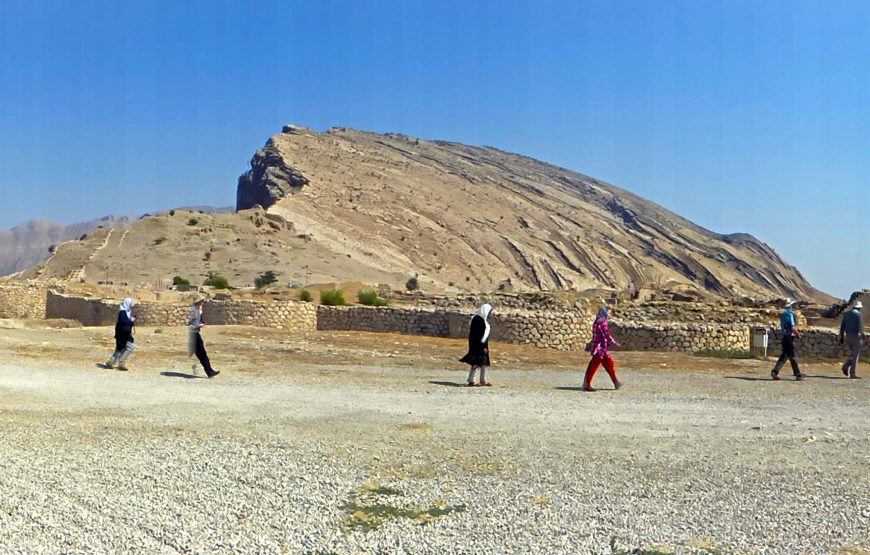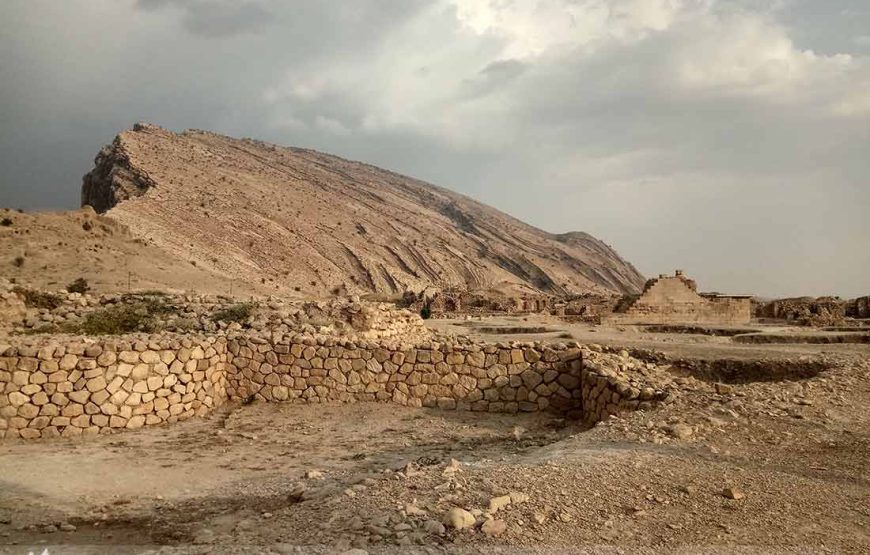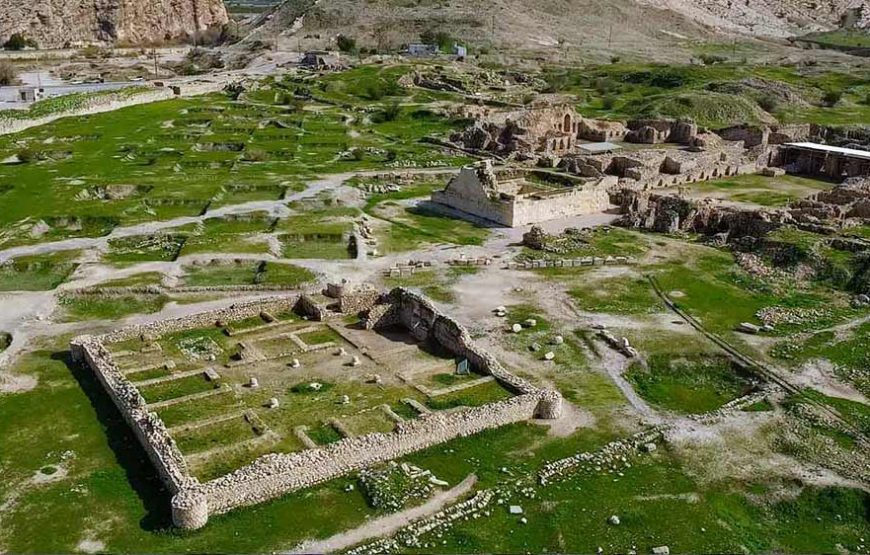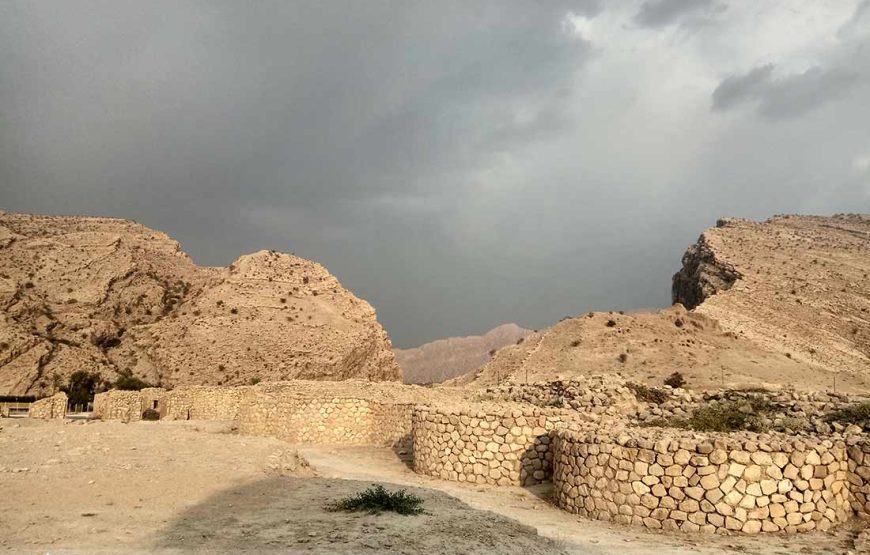Daily Excursion to Bishapur Ancient Site
Bishapur is an ancient archaeological site located in the southwest of Iran, near the modern city of Kazerun in the Fars Province. This historically significant city was founded by Shapur I, the second ruler of the Sassanian Empire, around 266 AD. Here are the key details about daily Excursion to Bishapur
| Season | All around the year |
| Start | Shiraz at 9:00- You will be collected at your hotel |
| Finish | Shiraz at 18:00- You will be dropped off at your hotel |
| Duration | One day (totally 4 hours driving) |
| Style | Cultural-Tour |
vehicle
| Depends on the size of the group |
Detail of Daily Excursion to Bishapur:
Bishapur is an ancient archaeological site located in the southwest of Iran, near the modern city of Kazerun in the Fars Province. This historically significant city was founded by Shapur I, the second ruler of the Sassanian Empire, around 266 AD. Here are the key details about Bishapur:
Historical Significance of Bishapur
- Founding: Bishapur was established by Shapur I to commemorate his victories over the Roman Emperor Valerian. The name “Bishapur” means “The City of Shapur.”
- Sassanian Era: The city was a prominent urban center during the Sassanian Empire, showcasing the architectural and artistic achievements of the period.
Architectural Features
- City Layout: Bishapur’s layout is a combination of Persian and Roman architectural styles. The city plan includes a grid pattern, which was unusual for Persian cities of the time and reflects Roman influence.
- Royal Palace: The ruins of Shapur’s royal palace are one of the main attractions. The palace complex includes large halls, residential quarters, and courtyards adorned with intricate stucco decorations and mosaics.
- Temple of Anahita: Dedicated to the goddess Anahita, this temple is another significant structure within Bishapur. It features a unique design with a central pool, reflecting the goddess’s association with water and fertility.
- Rock Reliefs: Near Bishapur, several rock reliefs depict Shapur I’s victories, including the famous scene of the Roman Emperor Valerian kneeling before Shapur. These reliefs are carved into the cliffs of Tang-e Chogan, a nearby valley, and are significant examples of Sassanian art and propaganda.
Cultural and Historical Context
- Sassanian Art and Architecture: Bishapur is an excellent representation of Sassanian art and architecture, reflecting the empire’s power and cultural sophistication. The use of both Persian and Roman elements highlights the Sassanian rulers’ ability to incorporate and adapt various influences.
- Roman Influence: The presence of Roman prisoners of war, including skilled craftsmen, is evident in the city’s construction. This blending of styles and techniques exemplifies the cultural exchanges that occurred due to Shapur’s military campaigns.
Archaeological Discoveries
- Excavations: Archaeological excavations at Bishapur have revealed a wealth of artifacts, including pottery, coins, and inscriptions. These discoveries provide valuable insights into the daily life, economy, and governance of the Sassanian period.
- Preservation Efforts: Efforts are ongoing to preserve and study the site. While some areas are well-preserved, others have suffered from natural and human-induced damage.
Educational and Cultural Importance
- Research and Education: Bishapur serves as an important educational site for historians, archaeologists, and students. It offers a tangible connection to the Sassanian Empire and its interactions with other cultures.
- Cultural Heritage: As a symbol of Iran’s rich historical legacy, Bishapur is crucial for understanding the cultural and political dynamics of the Sassanian era. It highlights the empire’s achievements and its role in shaping the region’s history.
In summary, Bishapur is a remarkable archaeological site that provides a deep insight into the Sassanian Empire’s history, architecture, and cultural achievements. Its blend of Persian and Roman influences, along with significant historical events depicted in its reliefs, makes it an invaluable resource for understanding ancient Iran.
In this tour, we experience a full day sightseeing in the depth of ancient world of Persia.



